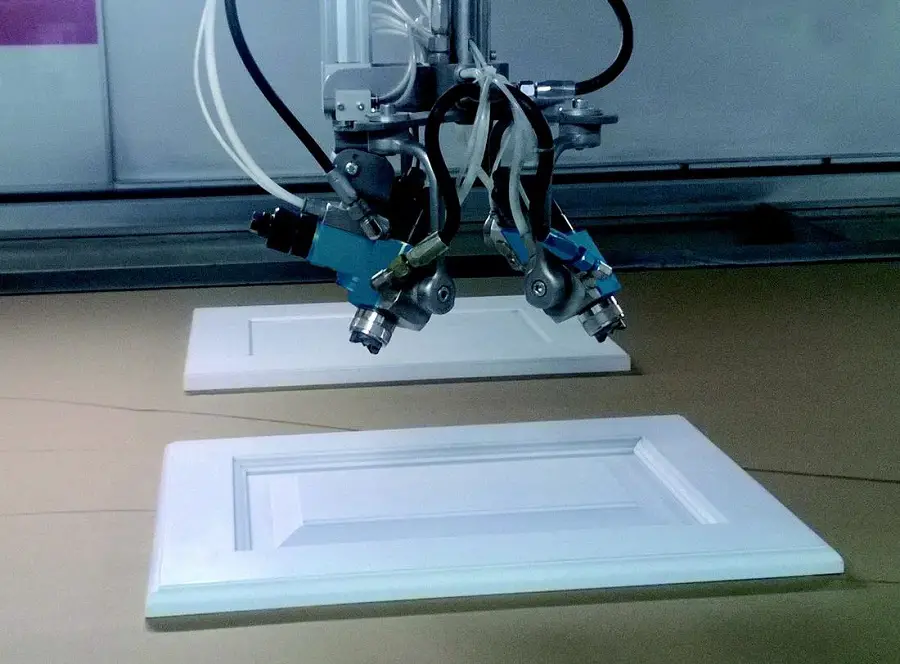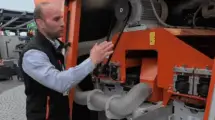In between the big furniture factories and the DIY enthusiasts, there is a growing category of carpenters with their own workshops, who are both entrepreneurs and employees. I had the pleasure of meeting some of them and discovered that some have left jobs in law, IT, set design or automotive engineering to follow their passion. They are perfectionists in their craft, they try to do everything to the best of their ability, they do their research and leave nothing to chance.
But when it comes to finishing objects or furniture with such attention to detail and finesse, some of them don't always make the best choices. They buy from the DIY stores for varnishes without much fuss, and if they've given up the paintbrush they decide to buy a spray gun from there too, thinking that being cheap they can buy another one when it starts to have problems. It was with them in mind when I decided to write these simple tips.
I want to be very clear from the outset. This is not about everyone in this profession nor is it a superior approach to the subject. I simply like this new generation, I am impressed by their desire to improve, and I want to help by sharing the knowledge I have gained from a lifetime spent in woodworking, while being aware that I can learn a lot from them too.

Jeweler - Dragoș Costache
The advice I want to give now is not about how a beginner in finishing actually works. It's about finding a serious supplier of materials and application systems that you can rely on whenever you need advice and especially when problems arise. So in my view you should:
- use professional products from wood varnish and paint suppliers or their distributors. This way you will have both products specially formulated for wood application and the technical support you need to get a quality product. Remember! You can make a beautiful product with perfect joints worthy of traditional Japanese carpentryBut if you apply a bad varnish everything is compromised;
- ask for all necessary information and product datasheets or any other documents containing technical data about the product;
- Ask about the company's technician, introduce yourself, ask for their phone number. When in doubt, it is a good idea to ask and clarify everything before you start work. Avoid a lot of hassle and more importantly, a lot of lost materials. Every such firm has well-trained technicians and it is a pity not to use a service that is made available to you for free;
- buy guns and spraying equipment from specialist firms. Tell them what you are going to do with that equipment and consult with them. They have a vested interest in giving you the best solution because they know that they're the ones to turn to if you have problems.
- don't compare the price of professional equipment with the price at the supermarket or DIY stores. Although they look the same, they are not. The price at the DIY store will always be more attractive, but it may not match the performance level of the professional;
- buy equipment with the same care you buy woodworking tools. If you think like this you will find that the approach will be different. If the chisels or equipment used for woodworking are of the highest quality, why would you buy a gun of which you are not sure of the quality, risking ruining all the work done up to the spraying stage?
You may think that this is trivial advice, but it's always the little, insignificant things that hinder us the most. I was talking the other day with Gabriel Mănoiu from Falk Consulting, distributor of spraying equipment in Romania Sames-Kremlin. Their equipment is the best-selling in the country, with guns both for small carpentry workshops and for sophisticated installations in large furniture factories.

I asked him to give me 5 tips he would give to a beginner in spraying. I was expecting some fancy stuff. In fact, I got the most simple and common sense advice. It all starts with simple, seemingly trivial things that we often tend to overlook. Here's Gabriel Mănoiu's advice:
- always use the appropriate nozzle on the gun, depending on the material and surface to be finished;
- adjust the pressure and jet opening according to the material used and the surface to be finished;
- hold the gun perpendicular to the surface to be finished and 'walk' with it over the surface, do not pendulate it;
- spray as much as possible on the surface and as little as possible off it. This avoids wastage. Don't, however, go to the other extreme, don't spray outwards at all, as you will "miss" the edges. The amount deposited on the extremities will be less than that in the middle;
- Follow the mixing and thinning instructions in the product data sheet. The laying down on the surface, the spillage of the material, the quality of the surface often depends on the way in which the preparation of the material has been done and less on the quality and adjustment of the spray gun.
Disarmingly simple, isn't it? And yet what big problems can arise if they are ignored!



































All respect for what you do.